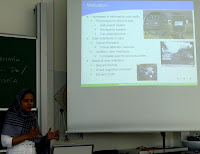Imagine there is a song – you know band and title – and you want to buy it. Should not be really something worthwhile reporting in a blog…
How long does it take to buy a song and how many steps does it need? I tried myself and was pretty much amazed that it is still more difficult than other ways to get music. The idea was to put the song into my shopping cart, press check-out, pay by credit card, and download. On the stores I encountered you have to register before to buy… I finally got the song and here are the steps at a major German music store: go to shop page, search for song, put in shopping cart, go to checkout, told to register, fill in registration form, told to confirm email, opened email client, waited 3 minutes for email, confirmed email, logged in on webpage, realized shopping card is empty :-(, search for song, put in shopping cart, go to checkout, entered credit card information, pay about 1.69€, got download link, got music.
I really wonder how many people will become first time buyers in this shop. Sometimes I think the things we teach in User Interface Engineering are obvious – but real life tells me they are not! If you run a music download portal or if you are in the music business and you wonder why no-one buys – we can tell you 🙂 it may be about utility and usability of your online offers… if you need more details we are happy to help you 🙂
PS: there was a store with a .ru address with better usability that offered the song with no registration at 0.20€ – but I did not want to give my credit card details…















